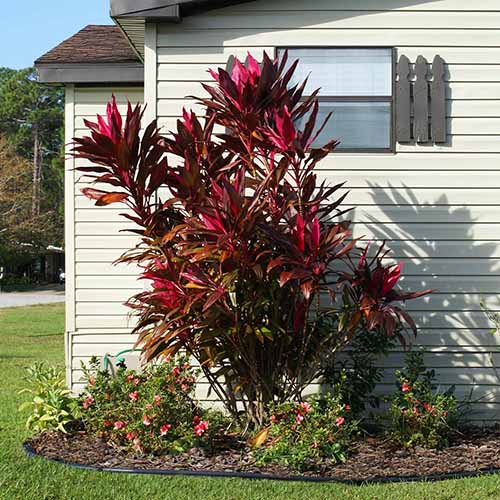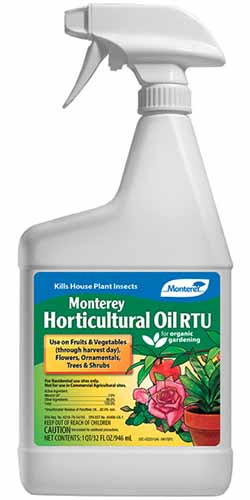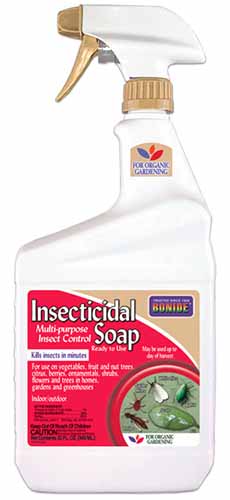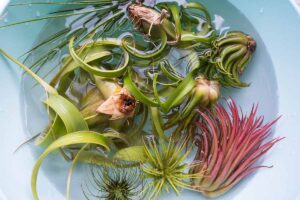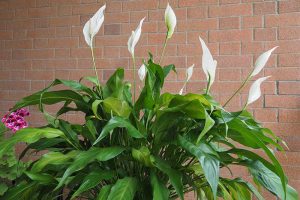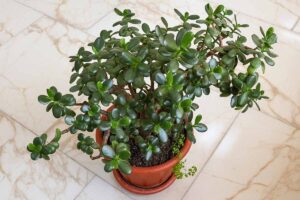Looking to add to the tropical vibes of your landscape? With a Hawaiian ti plant or two, you’ll definitely be able to pull it off.
With its beautifully lush, colorful leaves, and upright stature, Cordyline fruticosa has the goods for attracting and holding the gaze of onlookers, especially for those who have never seen it before. Not that an eyeful of these bad boys ever gets old, of course.
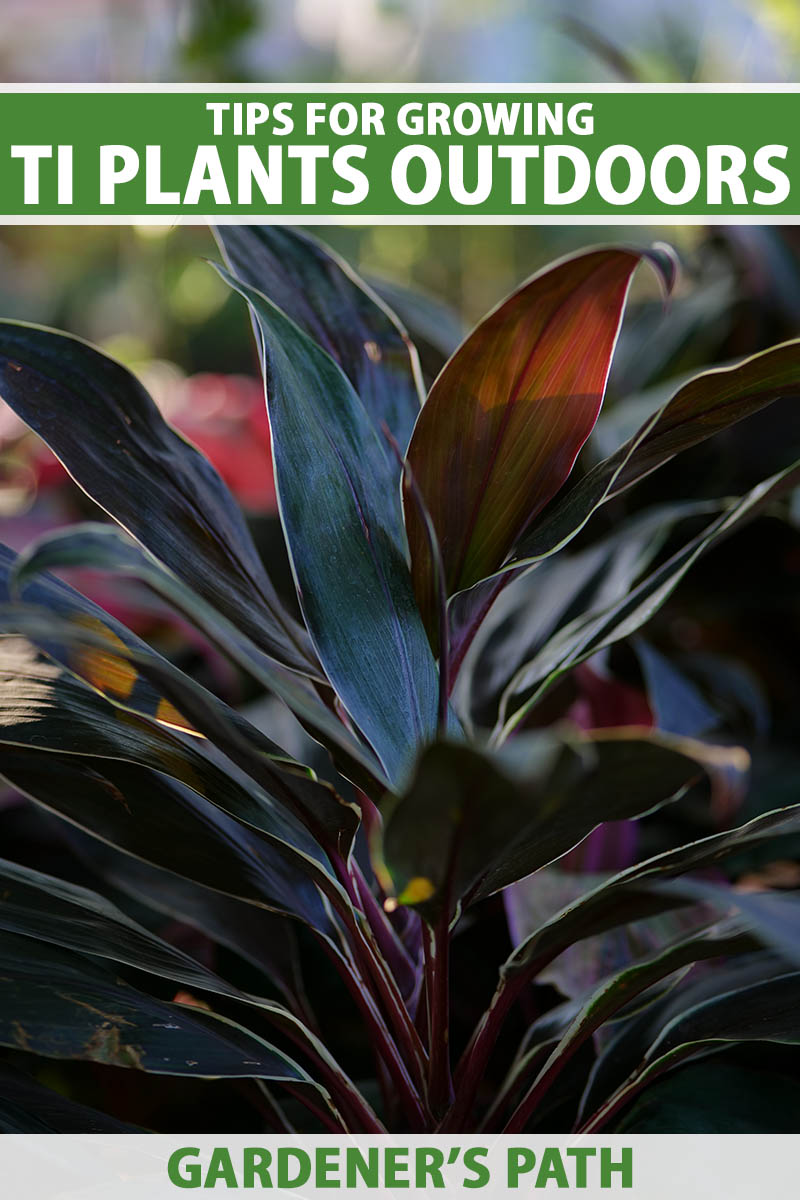
We link to vendors to help you find relevant products. If you buy from one of our links, we may earn a commission.
Whether you’re new to growing a tropical landscape or a seasoned pro, caring for Hawaiian ti plants outdoors definitely requires some specialized knowledge. But once you’ve got it down, they’re quite easy to maintain.
This guide has all the information that an outdoor ti plant parent needs to hit the ground running, so to speak.
From starting them off to keeping them healthy, you’ll have all the necessary details to start growing ti plants in your garden. And believe me: you’ll want to.
Here’s what we’ll cover:
What You’ll Learn
Let’s begin, shall we?
Ti Plants 101
A member of the tropical Cordyline genus alongside 23 other woody-stemmed and broadleaf evergreens, C. fruticosa is hardy in Zones 10 to 12, and originates from maritime Southeast Asia, north Australia, and west Oceania.
Introducing the species elsewhere has caused it to naturalize into the rest of Oceania, as well as into Central and South America.

Typically reaching a height of 10 feet and a spread of five feet when grown outdoors, C. fruticosa features thin, lanceolate leaves, each with a length of one to two feet and a width of about four inches.
Set on two- to six-inch-long petioles, the leaves typically start out purple to red, may mature to deep green or remain colorful, and are arranged spirally around the stem.
The lowermost leaves drop with age and leave leaf scars, while the portion of stem below the leaves matures into a woody tissue.
Below the soil line, a rhizomatous root system keeps the aboveground shoot tissue anchored, quenched, and fed.
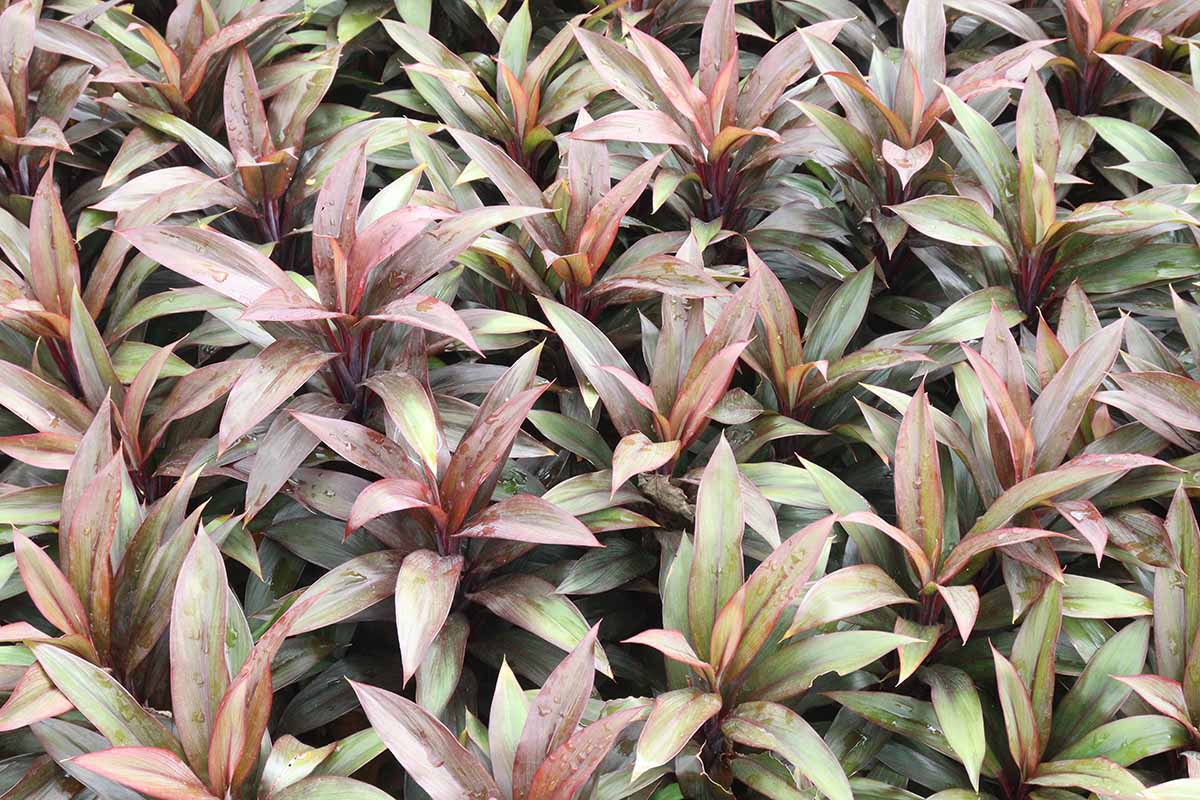
Come spring- or summertime, clusters of little star-shaped flowers bloom in hues of white, pale yellow, pink, or lavender. If those flowers are pollinated, then they’ll later give way to small red, yellow, or green berries.
From root to shoot, the entire plant contains toxic saponins, which household pets shouldn’t be allowed to consume, lest they suffer from hypersalivation, bloody stool and vomit, depression, and anorexia.
If your cat or dog does happen to consume C. fruticosa, then you should quickly take them to the vet or call poison control.

A former member of the Dracaena genus, Hawaiian ti plants are also known colloquially as good luck plants, cabbage palms, and palm lilies, as well as simply “Ki” – that last one comes from the Hawaiian tongue.
Speaking of, Hawaiians have found many religious, culinary, constructional, and decorative uses for ti plants, many of which are still popular today.
The leaves are used in floral arrangements, and the entire specimen is simply gorgeous, whether they’re outside or indoors.
If you want to learn how to cultivate your own Hawaiian ti plant indoors, check out our guide.
Variety Selection
Before you dive in too deep, it’s important to pick the right variety of C. fruticosa for your ornamental needs.
For your Hawaiian ti to become part of a cohesive and effective landscape design, then there are many color factors to consider, such as light vs. dark hues, monochromatic vs. multicolored.
To meet your ornamental needs, there are tons of different cultivars to choose from.
For dark selections with black, crimson, and other dark, brooding colors, try ‘Pele’s Flame,’ ‘Kilauea,’ or ‘Graveyard Red.’
‘Florica’ is fantastic as well, with deep burgundy foliage accented in cream, green, and pink.
You can find ‘Florica’ available in a three-gallon pot or a two- to three-feet tall specimen ready for transplanting from FastGrowingTrees.com.
Looking for specimens that rock brighter shades of red? Opt for ‘Red Sister,’ ‘Maui Beauty,’ or ‘Floozie.’
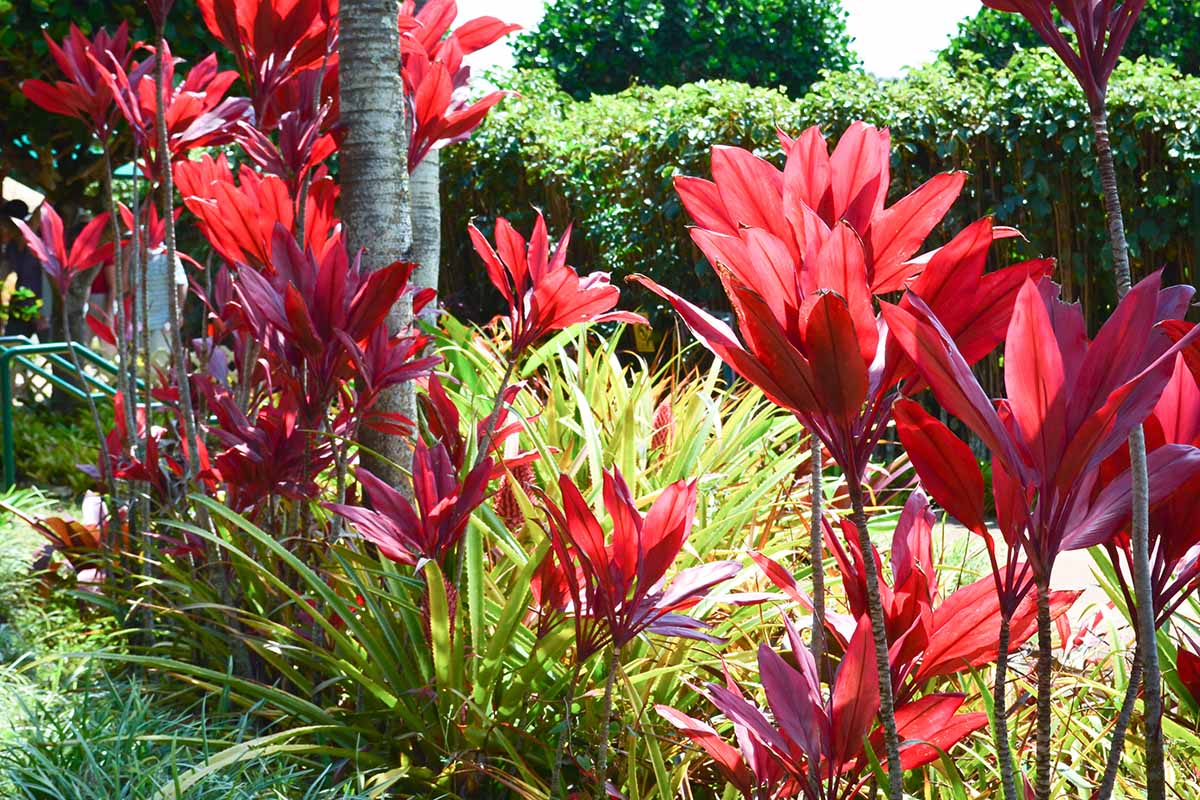
Oranges and yellows tickle your fancy? Look into ‘Haole Girl,’ ‘Bob Alonzo,’ and ‘Lau Kea.’
Want to stick closer to a more standard green? Hedge your bets on ‘Kahuna,’ ‘La’i,’ and ‘Lovely Hula Hands.’
Of course, there are many varieties with a blend of multiple colors that defy standard color palettes.
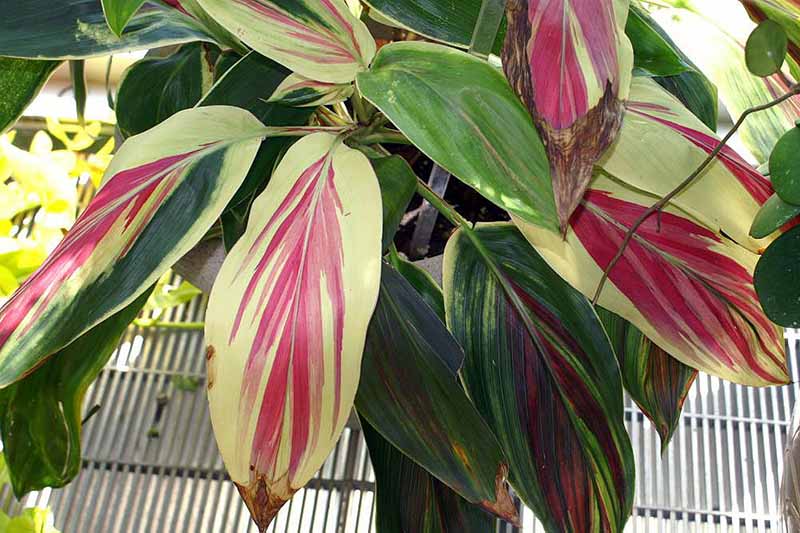
‘Amabilis’ has lustrous green leaves speckled with rose and white, the green leaves of ‘Baptisii’ have pink and yellow stripes, and ‘Kiwi’ has cream, pink, and green foliage.
If you’re jonesing for a multicolored specimen, go with the green, yellow-striped, and pink-tinged ‘Rising Sun’ cultivar, available in six-inch or three-gallon sizes from FastGrowingTrees.com.
Add variations in height and size to the mix, and you’ve got a smorgasbord of possible selections to choose from.
To do some more browsing, try visiting tropical plant nurseries, searching online vendors, or leafing through botanical catalogs.
Placement Tips
It’s important to consider how and where you’ll place your Hawaiian ti plants in the landscape.

A single C. fruticosa can look fantastic as a solitary specimen or as an accent to other tropical flora.
A small grouping of them could add colorful interest to a corner of your garden, while a mass of them can create a vivid backdrop for other, smaller species of different hues.
Hawaiian ti plants can also be used to spice up an otherwise conspicuous hardscape feature.
A line of them against the foundation of your home can mask a boring structure with a work of art, while a tall C. fruticosa can hide a light or fence post behind some lovely leaves.

Your outdoor ti plants aren’t confined to in-ground garden soil – they can also be grown in containers.
While in-ground specimens have lower irrigation requirements, containerized C. fruticosa are more easily movable, which comes in handy if your garden isn’t warm enough for a ti plant all year-round.
Plus, you can dress them up in a swanky pot and use them to liven up patios, entrance ways, and the like.
Propagation Protocols
A handful of propagation methods such as cane cuttings and air layering are already covered in our indoor ti plant guide, so let’s go over some that are more suitable for outdoor specimens.
Seed Sowing
Since sexual reproduction inherently results in genetic diversity, growing from seed can leave you with offspring that vary a bit from the parent.
While this is suboptimal for producing perfectly identical specimens, it can be fun for the backyard grower. And who knows, a seed could end up yielding a really cool mutation!
To collect seeds, you’ll need a C. fruticosa that has already yielded fruits. Alternatively, you could acquire seeds from a seedsman from late summer through early winter.
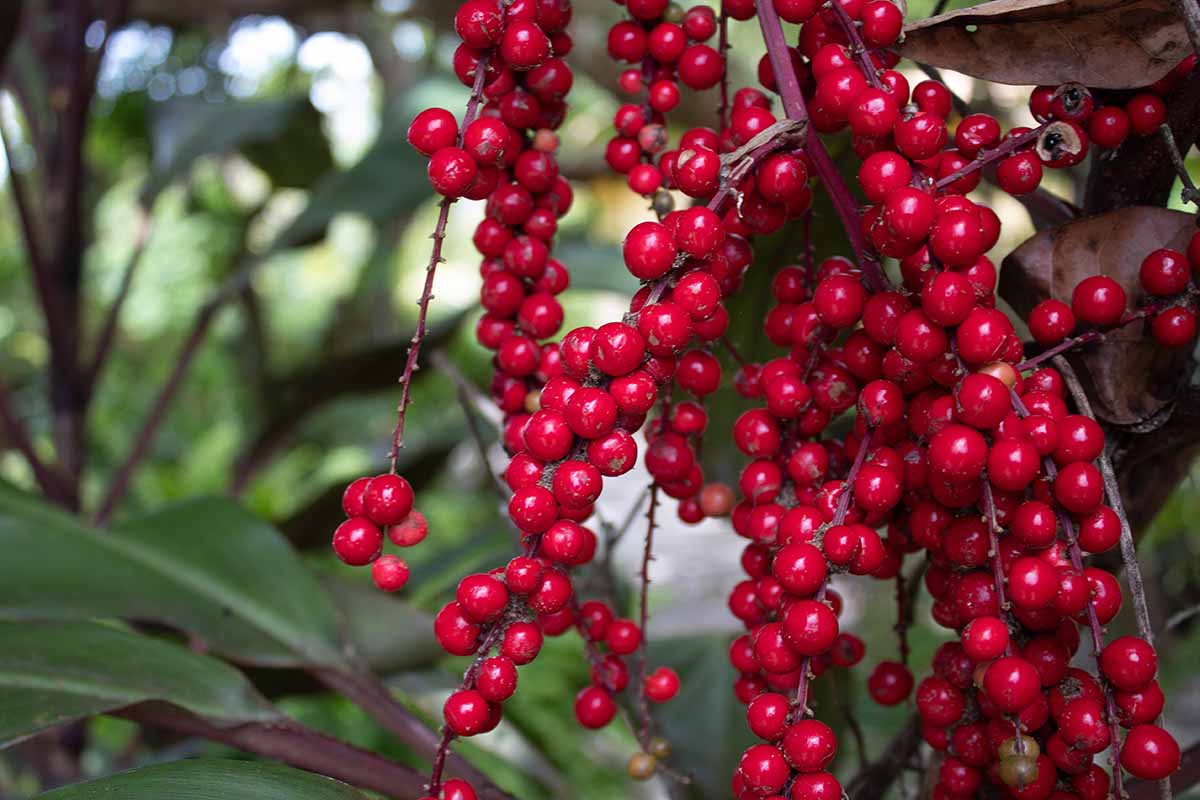
For DIY collection, you should start to keep your eyes peeled for red, yellow, or green berries once the flowers show up in spring and summer.
When the berries appear, you’ll need to wait until they’re ripe before harvesting them. Look for a slight softness upon squeezing, as well as bright, vibrant color.
To harvest, gently pluck the berries from the stem. From here, you can either sow them whole, or gently mash up the pulp by hand for quicker germination. But don’t try to sow individual seeds – at 16 tiny seeds per berry, they’re pretty difficult to handle.
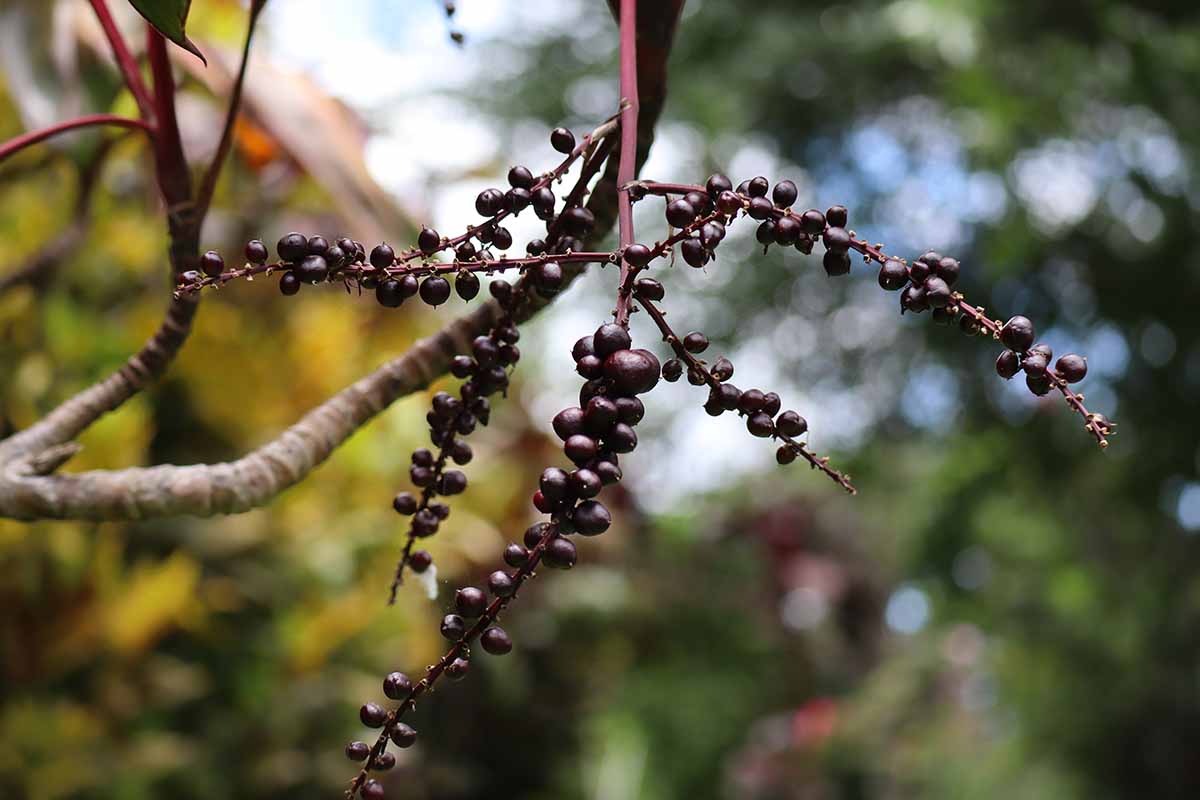
Fill a seed tray with a 50:50 mix of peat moss (or coconut coir) and vermiculite.
Whether whole or mashed, the berries should be sown a quarter of an inch below the surface of the growing medium, spaced at least an inch apart.
Moisten the media and keep the seeds indoors at a minimum of 65°F and a humidity of 40 percent, all the while exposed to bright, indirect light.
Keep the media moist as the seeds germinate. If sown fresh, the seeds should germinate in two to six weeks. As the seedlings start to compete for space, thin out the smallest, weakest-looking ones.
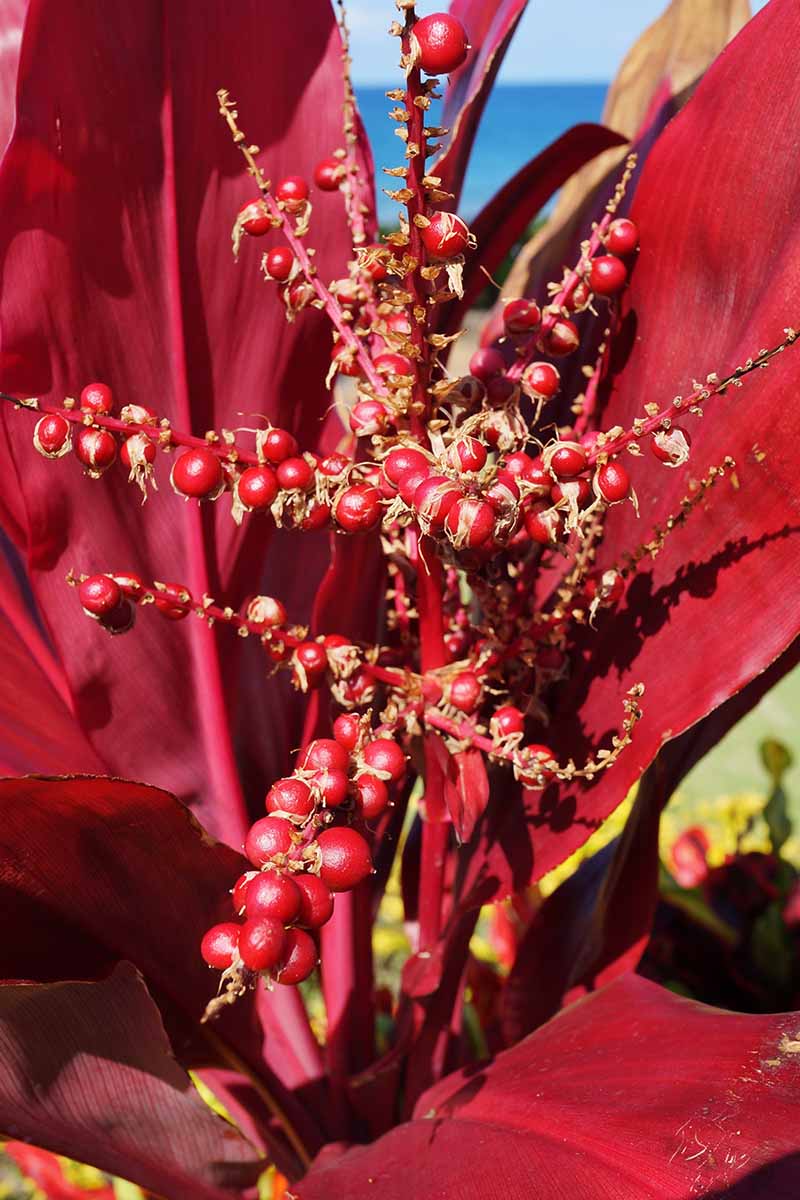
When the seedlings are two to three inches tall and develop strong root systems – which should take a couple of months – pot them on into their own individual four-inch containers, filled with a similar media.
Keep them indoors and maintain even moisture until the following spring – if applicable, wait until all risk of frost has passed. At that point, you should harden them off outside before transplanting.
To do this, leave the seedlings outside in full sun to partial shade for 30 to 60 minutes before bringing them back inside. Each following day, add 30 to 60 more minutes of outdoor exposure until they’re able to spend a full day outdoors.
Now, they’re ready to transplant!
Division
This method works when you’ve got a ti plant with multiple stems coming up from the ground.
If a specimen has outgrown its home, then dividing it kills two birds with one stone: more plants and more space!
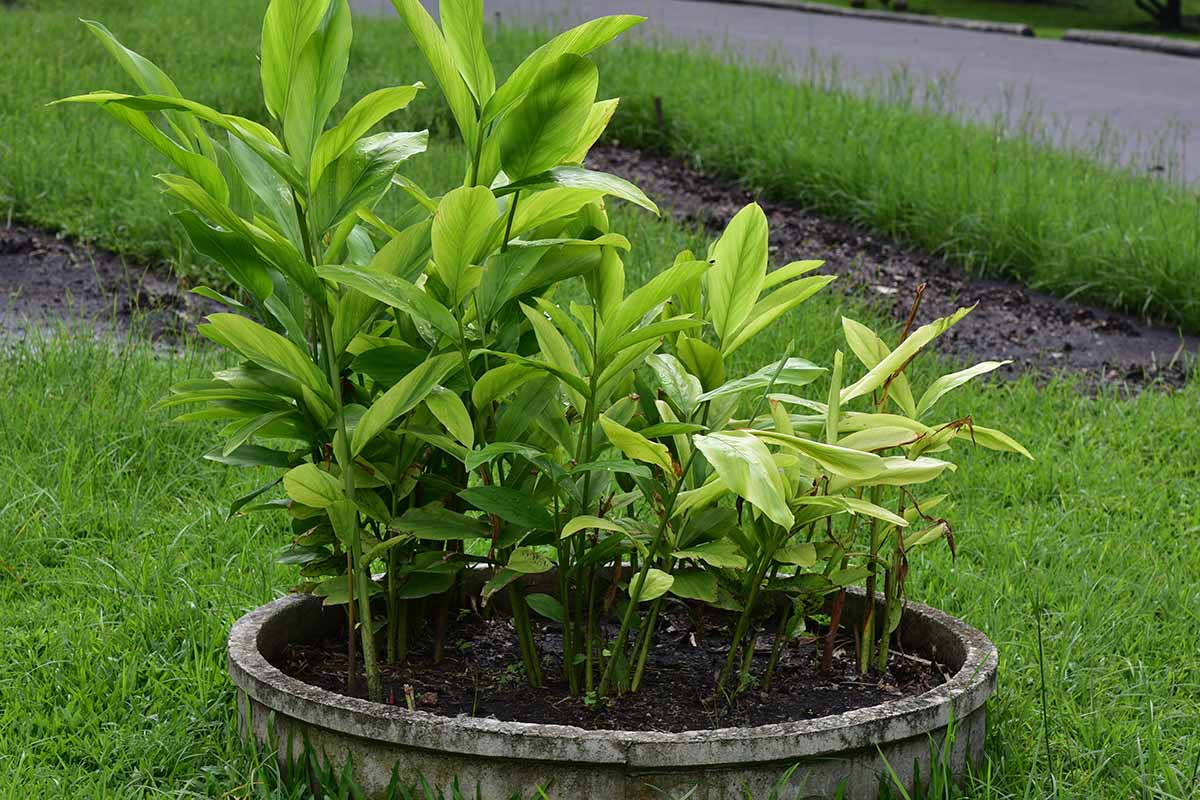
Select a healthy-looking, multi-stemmed C. fruticosa in spring and dig it out of the ground or gently remove it from its pot.
Brush the soil off the roots and use a sharp, sterile blade to cut the root system and separate the plant, leaving one or more stems per division.
Now, all of your divisions can be transplanted!
Transplanting
Before you go and prepare transplant sites in early spring – after the frost-free date, if your area has frost – you need to decide whether you’ll put your ti plants in the ground or in a container.
Either way, ensure that the transplants will have partial shade to full sun exposure.
For in-ground transplants, prepare sites with well-draining, fertile soil that has a pH of 5.5 to 6.5. Make sure each site is spaced at least 18 to 24 inches apart.
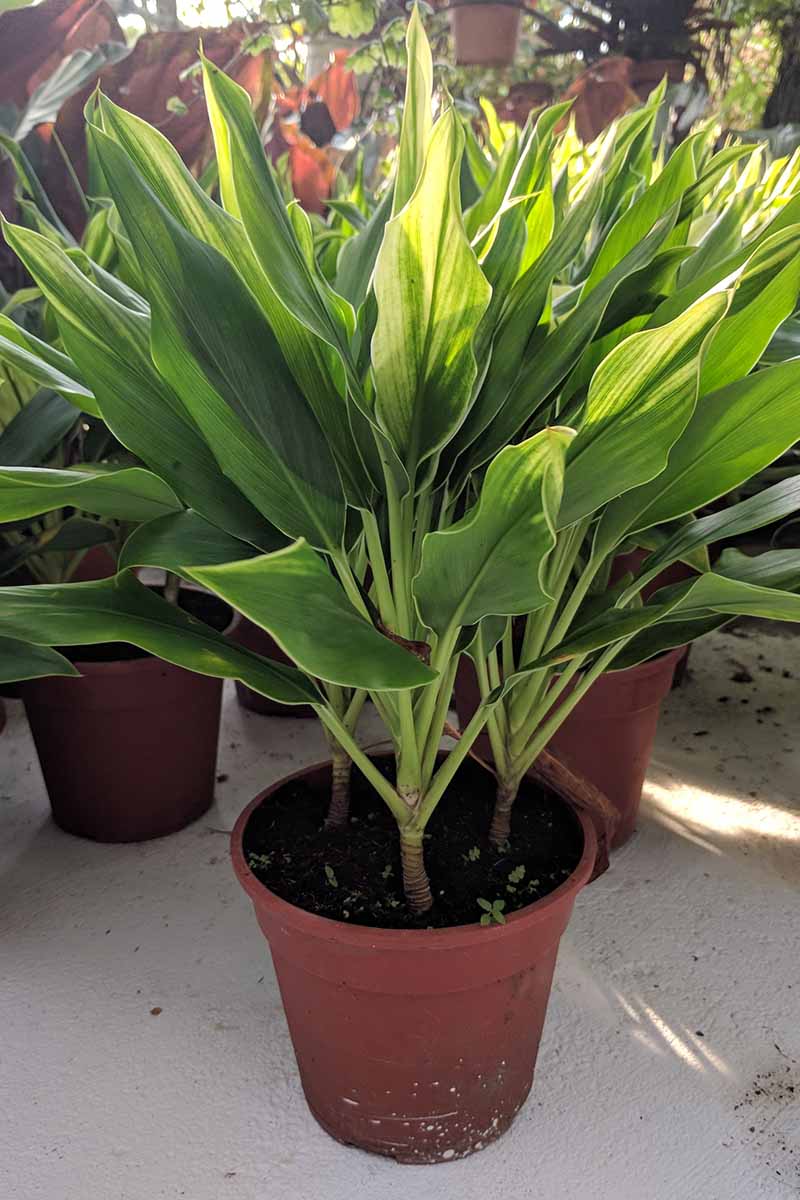
Prepare pots by filling them with a 50:50 mix of either peat moss or coconut coir and vermiculite.
Choose pots that are about an inch or two wider than the transplants’ root systems, and don’t forget to pick pots with drainage holes.
Once you have your sites prepared, dig holes wide and deep enough to fit the root systems.
Lift the transplants from their original containers, lower them into their new homes, then backfill. Moisten the surrounding soil, and you’re done!
Growth Requirements
Now that your ti plants are nicely settled in, it’s time to keep them healthy and happy.
Just a quick reminder: for optimal growth, C. fruticosa needs partial shade to full sun exposure, along with temperatures of 65 to 95°F.
To grow them outdoors year-round, your garden must be in USDA Zones 10 to 12. Otherwise, you’ll have to bring them inside from the cold whenever temperatures dip below 30°F.
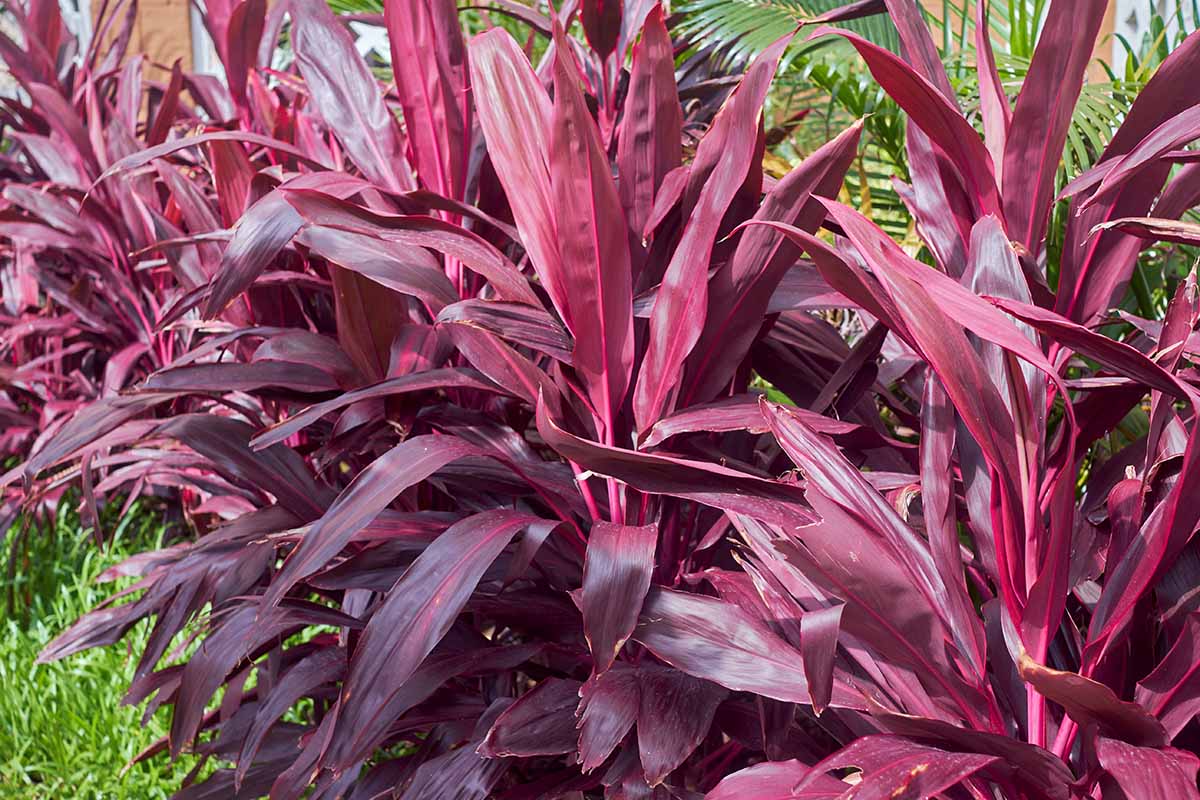
Ti plants won’t perish at the slightest breeze or anything, but they’ll definitely do better with some wind protection. A line of dense trees or shrubs such as arborvitae can provide a solid windbreak.
In terms of soil, both drainage and water retention are super important, along with a pH of 5.5 to 6.5.
High organic matter is also optimal – don’t forget to amend your garden beds annually with a couple of inches of compost, well-rotted manure, or some other kind of humus!
For container-grown C. fruticosa, try this Tropical Potting Mix from Miracle Gro, available in two six-quart packs from Amazon.

Miracle-Gro Tropical Potting Mix
In the absence of rain, be sure to water whenever the top inch or two of soil feels dry to the touch and use fluoride-free water whenever possible.
Additionally, adding a balanced fertilizer to the soil – once in spring, once again in summer – will help keep your Hawaiian ti plants fed and flourishing.
If your soil is naturally rich and fertile, you may not even need fertilizer.
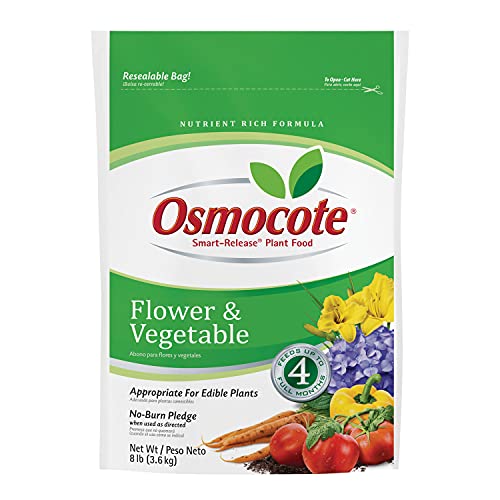
Need fertilizer? This granular, slow-release 14-14-14 fertilizer from Osmocote should do the trick. It’s available in various sizes from Amazon.
Maintenance Tips
As leaves turn yellow, die, or are damaged, they should be promptly pruned.
Pruning can also be used to keep a specimen’s size down, if necessary. If you want to rejuvenate the specimen a bit for increased vitality, cut it down to a height of six inches before the flush of new growth in spring.
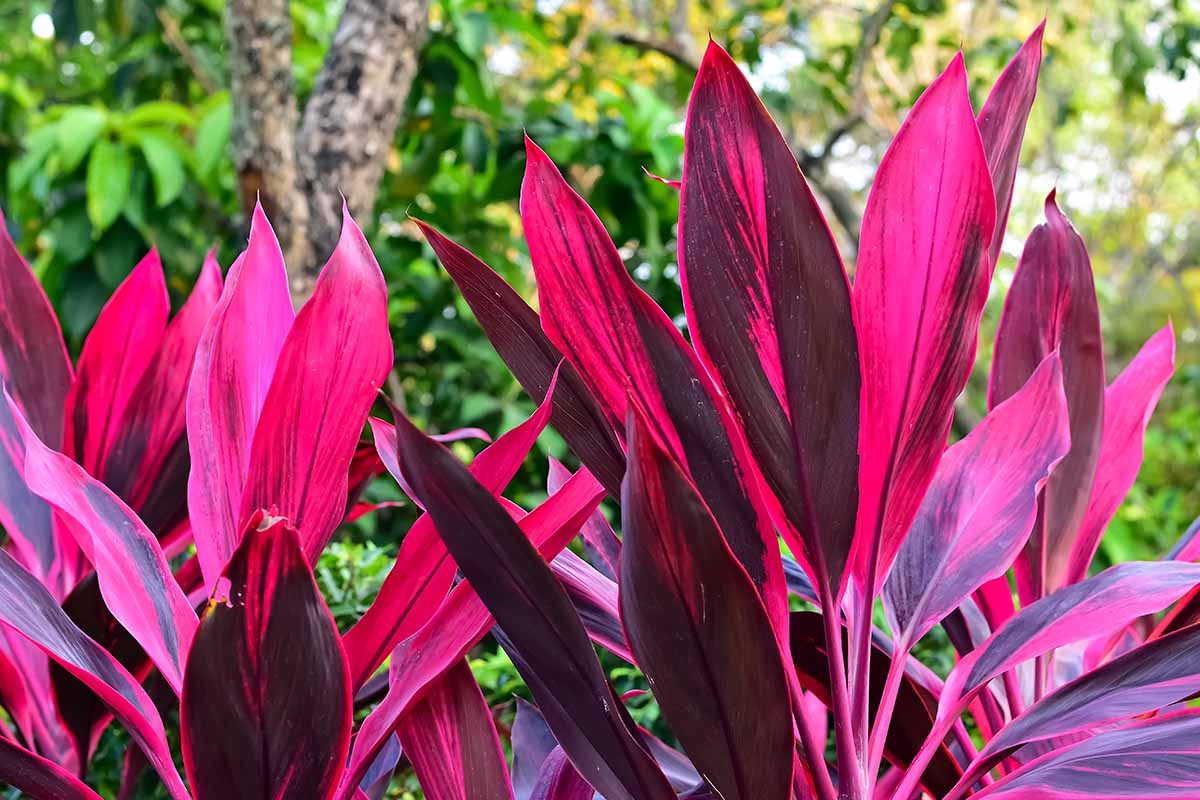
Container-grown ti plants should be repotted whenever their root system lacks that extra inch or two of wiggle room.
If your outdoor ti plants are located in an area that’s colder than USDA Hardiness Zone 10, then be prepared to bring your specimens inside and care for them whenever temperatures are predicted to dip below 30°F.
Pest and Disease Management
If your Hawaiian ti plants are to thrive outdoors for the long haul, you’ll need to keep them safe from pests and pathogens… or at least manage them whenever they show up.
In those cliched “hacking-through-a-tropical-rainforest-with-a-machete” scenes in adventure movies, the protagonists are never not surrounded by a swarm of bugs. And the creepy-crawlies that aren’t swarming our heroes are crawling on any bit of flora they can find.
All of this to say: pests love the hot and moist conditions that ti plants need.
Whiteflies, mealybugs, scale, thrips, spider mites, fungus gnats, and aphids can all infest C. fruticosa.
Leaf chlorosis, foliar distortion, and sooty mold are just a few symptoms that can result from pest infestation, not to mention the disease transmission and structural damage that can result from the feeding itself.
Strong sprays of water or manual scrape-offs can physically remove pests from leaves and stems, while applications of insecticidal soap or horticultural oil can suffocate and kill them.
If more control is necessary, then there are plenty of systemic insecticides like permethrins and spinosad available for you to wage war.
If you need horticultural oil, Monterey offers their OMRI-listed, ready-to-spray product in various volumes at Arbico Organics.
In addition, you can find Bonide multi-purpose insecticidal soap at Arbico Organics, as well.
As a rule of thumb, the healthier the specimen, the less susceptible it is to an infestation. So the better you care for your specimens, the less likely that bugs will come along and have a field day.
Same goes for pathogens, too. If a C. fruticosa is already sickly from poor cultivation, then it’s all too easy for an actual sickness to take hold.
In addition to providing the proper care, you should avoid both overwatering and overhead watering – excess moisture on the leaves promotes pathogen growth, and soggy soils can suffocate the roots.
But despite all your efforts, disease can still show up, unfortunately.
Various bacterial and fungal leaf spot diseases will manifest with the eponymous spotting, while root rots cause deterioration both above and below the soil line. In the case of a severe infection, plants can perish.
Regardless of the disease, you should respond promptly by removing symptomatic leaves, and if you notice the powdery spores of Fusarium rots or the slimy-looking symptoms of Erwinia leaf and stem rot, discard infected specimens entirely.
Fungicide applications can protect nearby healthy specimens, as well as prevent infection in susceptible areas from the get-go.
It’s Ti Time!
And just like a mouth-watering cup of chai, a well-placed C. fruticosa can really hit the spot.

Whether you add a mass of Hawaiian ti plants or just one to your landscape, you’re sure to be pleased with the result. But be forewarned: when it comes to a beautiful ti plant, moderation is dang near impossible.
Curious about an aspect of outdoor C. fruticosa care that I may have missed? Have experience of your own to share? The comments section is for you.
And for more information about tropical foliage plants, check out these guides next:
